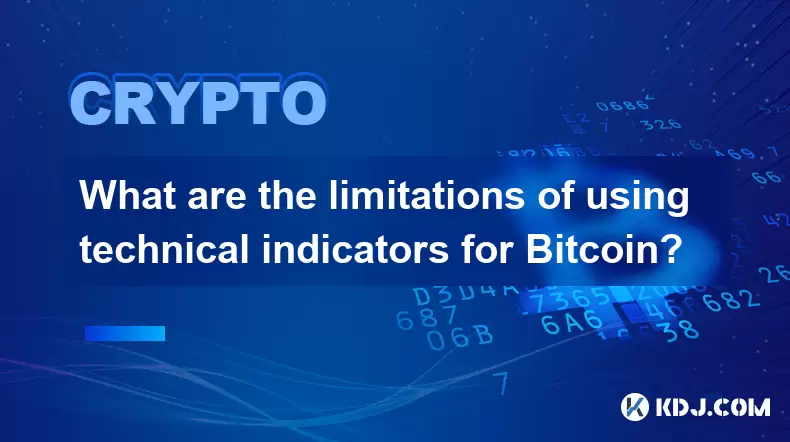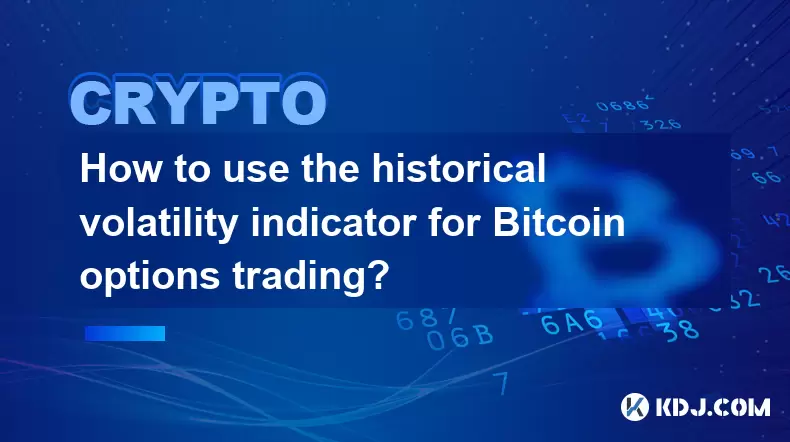-
 Bitcoin
Bitcoin $108,250.0992
0.11% -
 Ethereum
Ethereum $2,515.9404
0.03% -
 Tether USDt
Tether USDt $1.0003
0.00% -
 XRP
XRP $2.2166
-0.19% -
 BNB
BNB $656.5904
0.29% -
 Solana
Solana $147.4122
-0.58% -
 USDC
USDC $1.0000
-0.01% -
 TRON
TRON $0.2830
0.06% -
 Dogecoin
Dogecoin $0.1641
0.27% -
 Cardano
Cardano $0.5739
-0.19% -
 Hyperliquid
Hyperliquid $39.1463
-0.11% -
 Sui
Sui $2.8882
-0.02% -
 Bitcoin Cash
Bitcoin Cash $487.6428
0.31% -
 Chainlink
Chainlink $13.2097
0.07% -
 UNUS SED LEO
UNUS SED LEO $9.0308
0.10% -
 Avalanche
Avalanche $17.8608
0.13% -
 Stellar
Stellar $0.2379
-0.06% -
 Toncoin
Toncoin $2.7400
-0.39% -
 Shiba Inu
Shiba Inu $0.0...01144
-0.36% -
 Litecoin
Litecoin $87.5467
0.66% -
 Hedera
Hedera $0.1538
0.22% -
 Monero
Monero $315.5479
0.36% -
 Dai
Dai $1.0000
0.00% -
 Polkadot
Polkadot $3.3523
-0.71% -
 Ethena USDe
Ethena USDe $1.0003
0.01% -
 Bitget Token
Bitget Token $4.3960
-1.03% -
 Uniswap
Uniswap $7.2663
4.19% -
 Aave
Aave $272.8619
2.04% -
 Pepe
Pepe $0.0...09676
-0.18% -
 Pi
Pi $0.4586
-2.87%
How fast is Bitcoin's transaction speed? Why sometimes it takes a long time for transactions to be confirmed?
Bitcoin transaction speed varies from 10 minutes to an hour, influenced by network congestion, fees, transaction size, and block limits, impacting user experience.
Apr 27, 2025 at 01:07 pm

Bitcoin's transaction speed is a critical aspect of its functionality and user experience. The speed at which Bitcoin transactions are processed and confirmed can vary significantly, influenced by multiple factors within the cryptocurrency's network. In this article, we will explore the average transaction speed of Bitcoin, the reasons behind the varying confirmation times, and the technical aspects that contribute to these phenomena.
Understanding Bitcoin Transaction Speed
Bitcoin's transaction speed is typically measured in terms of the time it takes for a transaction to be confirmed on the blockchain. On average, a Bitcoin transaction can be confirmed within 10 minutes to one hour. This range can fluctuate based on several factors, including network congestion and the transaction fee set by the sender.
The process begins when a user initiates a transaction. This transaction is then broadcast to the Bitcoin network, where it awaits inclusion in a block. Miners, who are responsible for adding transactions to blocks, select transactions based on their fees and the size of the transaction data. Once a transaction is included in a block, it undergoes a process called confirmation, where subsequent blocks are added to the chain, solidifying the transaction's place in the blockchain.
Factors Affecting Transaction Speed
Several factors can influence how quickly a Bitcoin transaction is confirmed. Understanding these factors can help users manage their expectations and optimize their transactions.
Network Congestion: During periods of high network activity, such as when there is a surge in Bitcoin usage, the number of pending transactions can increase significantly. This leads to a backlog, causing delays in transaction confirmations. Higher transaction fees can help prioritize a transaction, but during extreme congestion, even high fees might not guarantee quick confirmation.
Transaction Fees: The fee attached to a transaction plays a crucial role in its confirmation speed. Miners prioritize transactions with higher fees because they are incentivized to maximize their revenue. Users can set their fees based on their urgency, with higher fees leading to faster confirmations.
Transaction Size: The size of a transaction, measured in bytes, also affects its processing speed. Transactions with more inputs and outputs are larger and take up more space in a block. Larger transactions may be less attractive to miners, leading to slower confirmation times.
Block Size Limit: Bitcoin's block size is currently limited to 1 MB. This limit restricts the number of transactions that can be included in each block. When the number of pending transactions exceeds the capacity of blocks, it results in slower transaction speeds.
The Confirmation Process and Its Impact on Speed
The confirmation process is fundamental to understanding why some transactions take longer to be processed. When a transaction is included in a block, it is considered to have one confirmation. Each subsequent block added to the blockchain increases the number of confirmations, making the transaction more secure.
One Confirmation: A transaction with one confirmation is considered pending and can still be reversed through a process called double-spending. This is less likely but still possible.
Multiple Confirmations: As more blocks are added, the transaction becomes more secure. Typically, six confirmations are considered sufficient to ensure the transaction is irreversible. This can take around one hour under normal network conditions.
The time it takes to achieve these confirmations can vary. If the network is congested, it might take longer for subsequent blocks to be mined, thus delaying the confirmation process.
Technical Aspects of Bitcoin's Transaction Speed
To delve deeper into the technical reasons behind Bitcoin's transaction speed, it is essential to understand the underlying mechanics of the Bitcoin network.
Block Time: Bitcoin's block time, the average time it takes to mine a new block, is designed to be around 10 minutes. This is a fundamental parameter set by the Bitcoin protocol to maintain network security and stability. Variations in block time can directly affect transaction speed.
Mining Difficulty: The difficulty of mining a block adjusts approximately every two weeks to maintain the 10-minute block time. If the network's total computing power increases, the difficulty increases, and vice versa. This adjustment can indirectly impact transaction speeds.
Transaction Verification: Each transaction must be verified by nodes on the network before it can be included in a block. This verification process ensures the integrity of the transaction but adds to the overall time required for confirmation.
Strategies to Improve Transaction Speed
For users looking to optimize their Bitcoin transactions, several strategies can be employed to potentially improve transaction speed.
Setting Appropriate Fees: Users can use fee estimation tools to determine the optimal fee for their transaction based on current network conditions. Higher fees can increase the likelihood of quicker confirmation.
Using Segregated Witness (SegWit): SegWit is a protocol upgrade that allows more transactions to fit into a single block by altering how data is stored. Transactions using SegWit are generally processed faster and with lower fees.
Batch Transactions: Combining multiple transactions into one can reduce the overall size and number of transactions, potentially speeding up the confirmation process.
Timing Transactions: Avoiding peak times when the network is most congested can help ensure faster transaction processing. Users can monitor network activity and plan their transactions accordingly.
Real-World Examples of Transaction Delays
To illustrate the variability in Bitcoin transaction speeds, consider the following real-world examples:
December 2017: During the peak of the 2017 bull run, Bitcoin experienced significant network congestion. Transaction fees skyrocketed, and confirmation times stretched to several hours or even days for some users. This was due to an unprecedented increase in transaction volume that overwhelmed the network.
May 2021: Another period of high congestion occurred in May 2021, when Bitcoin's price surged, leading to increased trading activity. Users reported delays in transaction confirmations, with some transactions taking over an hour to be processed, even with relatively high fees.
These examples highlight how external factors such as market conditions and user behavior can impact Bitcoin's transaction speed.
Frequently Asked Questions
Q: Can I speed up a Bitcoin transaction after it has been sent?
A: Once a transaction is broadcast to the network, it cannot be directly sped up. However, if you have not received the necessary confirmations, you can attempt to replace-by-fee (RBF) the transaction by sending a new transaction with a higher fee, which miners might prioritize over the original.
Q: What is the role of miners in Bitcoin transaction speed?
A: Miners are crucial to Bitcoin's transaction speed as they are responsible for validating and adding transactions to blocks. They prioritize transactions based on fees, which directly impacts how quickly a transaction is confirmed. Miners also maintain the network's security by solving complex mathematical problems to mine new blocks.
Q: Are there any alternatives to Bitcoin that offer faster transaction speeds?
A: Yes, several cryptocurrencies have been developed to address the issue of slow transaction speeds. For example, Litecoin and Bitcoin Cash have larger block sizes and faster block times, which can result in quicker transaction confirmations. Additionally, Layer 2 solutions like the Lightning Network for Bitcoin aim to facilitate faster and cheaper transactions off the main blockchain.
Q: How does the Lightning Network affect Bitcoin transaction speed?
A: The Lightning Network is a second-layer scaling solution that enables faster and cheaper Bitcoin transactions by processing them off the main blockchain. It allows users to open payment channels and conduct multiple transactions instantly, with only the final settlement being recorded on the blockchain. This significantly reduces the time and cost associated with traditional on-chain transactions.
Disclaimer:info@kdj.com
The information provided is not trading advice. kdj.com does not assume any responsibility for any investments made based on the information provided in this article. Cryptocurrencies are highly volatile and it is highly recommended that you invest with caution after thorough research!
If you believe that the content used on this website infringes your copyright, please contact us immediately (info@kdj.com) and we will delete it promptly.
- Litecoin Breakout Watch: What Traders Need to Know Now
- 2025-07-06 16:50:13
- Bitcoin, Solana, Ethereum: Decoding the Latest Buzz on the Blockchain
- 2025-07-06 16:50:13
- Widnes Resident's 50p Could Be Your Ticket to Easy Street: Rare Coin Mania!
- 2025-07-06 16:55:13
- Bitcoin, Solaris Presale, and Token Rewards: What's the Buzz?
- 2025-07-06 16:55:13
- Ethereum Under Pressure: Price Drop Amid Global Uncertainties
- 2025-07-06 17:00:13
- XRP, SEC Case, and Prosperity: A New Era for XRP Holders?
- 2025-07-06 17:10:13
Related knowledge

What is the Woodies CCI indicator and can it be used for Bitcoin?
Jul 04,2025 at 05:14pm
Understanding the Woodies CCI IndicatorThe Woodies CCI indicator is a variation of the traditional Commodity Channel Index (CCI), which was originally developed by Donald Lambert. The standard CCI measures the current price level relative to an average price over a given period, typically 14. However, the Woodies version modifies this calculation to mak...

How to use indicators to trade the opening range breakout for Bitcoin CME futures?
Jul 05,2025 at 07:35pm
What Is the Opening Range Breakout Strategy?The opening range breakout (ORB) strategy is a popular trading technique used in both traditional markets and cryptocurrency futures, particularly for Bitcoin on the CME. This method involves identifying a specific price range formed during the early phase of a trading session and then taking positions when th...

What does a bearish cross on the Stochastic RSI mean for Bitcoin?
Jul 05,2025 at 07:18pm
Understanding the Stochastic RSI IndicatorThe Stochastic RSI (Relative Strength Index) is a momentum oscillator used in technical analysis to identify overbought or oversold conditions in an asset's price. It combines two well-known indicators — the RSI and the Stochastic Oscillator — to provide more nuanced signals than either could alone. The Stochast...

What are the limitations of using technical indicators for Bitcoin?
Jul 06,2025 at 03:35am
Understanding the Role of Technical Indicators in Cryptocurrency TradingIn the realm of Bitcoin trading, technical indicators are tools used by traders to analyze historical price data and volume to predict future price movements. These indicators—such as Moving Averages, Relative Strength Index (RSI), and MACD—are widely adopted across traditional fina...

How to use the historical volatility indicator for Bitcoin options trading?
Jul 06,2025 at 04:14am
Understanding the Historical Volatility IndicatorThe historical volatility indicator (HV) is a statistical measure used to assess the price fluctuations of an asset over a specific time period. In the context of Bitcoin options trading, this metric helps traders evaluate past price movements to anticipate potential future swings. Unlike implied volatili...

Best indicator for confirming chart patterns like head and shoulders on Bitcoin
Jul 06,2025 at 01:07pm
Understanding Chart Patterns in Cryptocurrency TradingIn the volatile world of Bitcoin trading, chart patterns serve as critical tools for identifying potential price movements. Among these, the head and shoulders pattern is one of the most reliable reversal indicators. Recognizing this formation requires not only visual identification but also confirma...

What is the Woodies CCI indicator and can it be used for Bitcoin?
Jul 04,2025 at 05:14pm
Understanding the Woodies CCI IndicatorThe Woodies CCI indicator is a variation of the traditional Commodity Channel Index (CCI), which was originally developed by Donald Lambert. The standard CCI measures the current price level relative to an average price over a given period, typically 14. However, the Woodies version modifies this calculation to mak...

How to use indicators to trade the opening range breakout for Bitcoin CME futures?
Jul 05,2025 at 07:35pm
What Is the Opening Range Breakout Strategy?The opening range breakout (ORB) strategy is a popular trading technique used in both traditional markets and cryptocurrency futures, particularly for Bitcoin on the CME. This method involves identifying a specific price range formed during the early phase of a trading session and then taking positions when th...

What does a bearish cross on the Stochastic RSI mean for Bitcoin?
Jul 05,2025 at 07:18pm
Understanding the Stochastic RSI IndicatorThe Stochastic RSI (Relative Strength Index) is a momentum oscillator used in technical analysis to identify overbought or oversold conditions in an asset's price. It combines two well-known indicators — the RSI and the Stochastic Oscillator — to provide more nuanced signals than either could alone. The Stochast...

What are the limitations of using technical indicators for Bitcoin?
Jul 06,2025 at 03:35am
Understanding the Role of Technical Indicators in Cryptocurrency TradingIn the realm of Bitcoin trading, technical indicators are tools used by traders to analyze historical price data and volume to predict future price movements. These indicators—such as Moving Averages, Relative Strength Index (RSI), and MACD—are widely adopted across traditional fina...

How to use the historical volatility indicator for Bitcoin options trading?
Jul 06,2025 at 04:14am
Understanding the Historical Volatility IndicatorThe historical volatility indicator (HV) is a statistical measure used to assess the price fluctuations of an asset over a specific time period. In the context of Bitcoin options trading, this metric helps traders evaluate past price movements to anticipate potential future swings. Unlike implied volatili...

Best indicator for confirming chart patterns like head and shoulders on Bitcoin
Jul 06,2025 at 01:07pm
Understanding Chart Patterns in Cryptocurrency TradingIn the volatile world of Bitcoin trading, chart patterns serve as critical tools for identifying potential price movements. Among these, the head and shoulders pattern is one of the most reliable reversal indicators. Recognizing this formation requires not only visual identification but also confirma...
See all articles

























































































